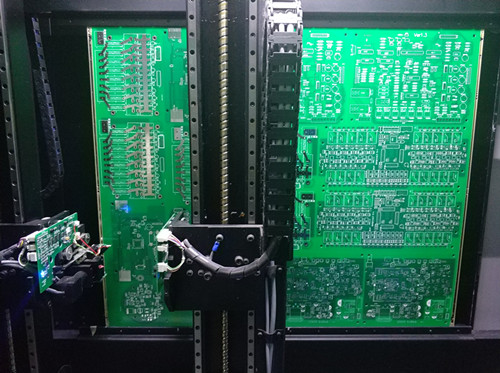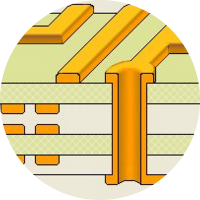Six Ways to Prevent PCB Board from Bending and Warping
1. Reduce the effect of temperature on PCB board stress
Since "temperature" is the main source of board stress, as long as the temperature of the PCB SMT assembly reflow oven is lowered or the speed of heating and cooling of the board in the reflow oven is slowed down, the occurrence of board bending and board warping can be greatly reduced. However, other side effects may occur, such as solder shorts.
2. Use high Tg PCB material
Tg is the glass transition temperature, that is the temperature at which the material changes from a glass state to a rubber state. The lower the Tg value of the material, the faster the board starts to soften after entering the reflow oven, and the longer time it stay a soft rubber state.And the deformation of the board will of course be more serious. The use of a higher Tg PCB material can increase its ability to withstand stress and deformation, but the price of the printed circuit board material is relatively high.
3. Increase the thickness of the printed circuit board
In order to achieve lighter and thinner thickness of many electronic products, the thickness of the board has been left at 1.0mm, 0.8mm, and even 0.6mm. Such a thickness should keep the board from being deformed after passing through the PCB SMT assembly reflow oven, which is really a bit difficult. It is suggested that if there is no requirement for thinness and lightness, the thickness of the board should preferably be 1.6mm, which can greatly reduce the risk of board bending and deformation.
4. Reduce the size of the circuit board and reduce the number of panels
Since most reflow ovens use chains to drive the PCB forward, the larger the PCB will be dented and deformed in the reflow oven due to its own weight, so try to put the long side of the PCB as the board edge. On the chain of the reflow oven, the concave deformation caused by the weight of the PCB itself can be reduced. This is also the reason for reducing the number of panels. That is to say, when passing the oven, try to use the narrow side to be perpendicular to the oven direction, which can achieve the lowest the amount of concave deformation.
5. Use the oven tray fixture
If the above methods are difficult to do, the last thing is to use a reflow carrier/template to reduce the amount of deformation. The reason why the reflow carrier can reduce the bending of the PCB is because whether it is thermal expansion or cold contraction, it is hoped that the tray can hold the PCB board in place until the PCB's temperature drops below the Tg value and begins to harden again, and then maintains its original size.
If the single-layer tray cannot reduce the deformation of the printed circuit board, it is necessary to add a layer of cover to clamp the PCB with the upper and lower trays, which can greatly reduce the deformation of the circuit board through the pcb assembly reflow oven. However, this oven tray is quite expensive, and you have to add labor to place and recycle the tray.
6. Use Router instead of V-Cut's sub-board
Since V-Cut will destroy the structural strength of the PCB panel between the boards, try not to use the V-Cut sub-board, or reduce the depth of the V-Cut.
 Sign In
Sign In Join Free
Join Free



